An Idiot's Guide To The Nissan Skyline GT-R: History, Generations, Special Editions
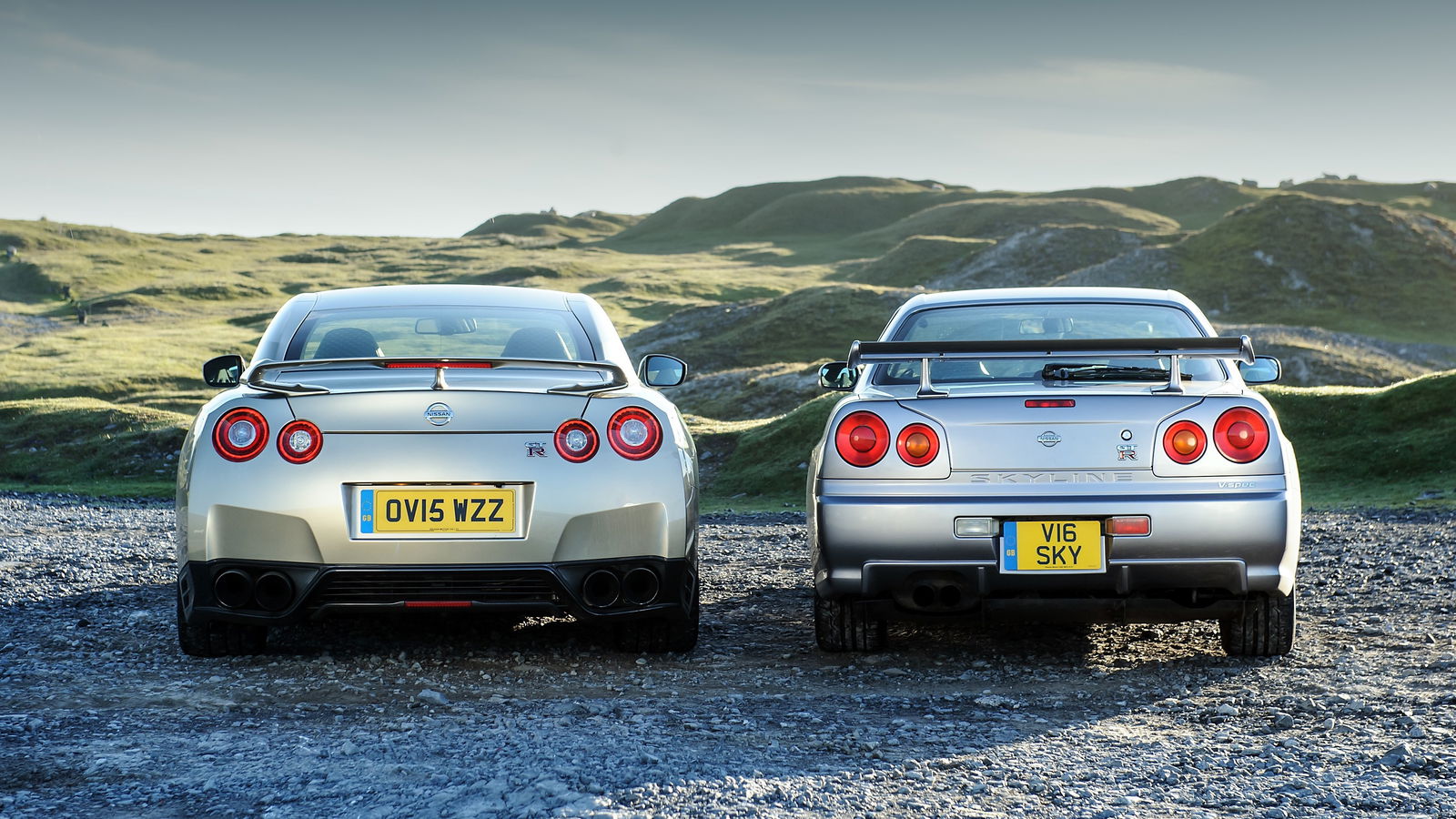
For more than 50 years, the Nissan Skyline GT-R has held a special place in the hearts of Japanese car aficionados. Evolving from the racing incarnation of a long-running JDM standard, subsequent models set the scene for the snarling R35 GT-R of today, captivating petrolheads on track and on the road as they went.
First introduced in the late 1960s, the early Skyline GT-Rs raced in domestic touring car championships, but its development was stymied by the energy crises of the 1970s, which sent demand for high-performance cars through the floor. There followed a 16-year gap in GT-R production, but it returned in the late ‘80s with racing again at the forefront of Nissan’s mind. The turbocharged, all-wheel-drive R32 set the template for what a modern Skyline GT-R should be, and that continued through the R33 of the mid-90s and the R34 at the turn of the century.
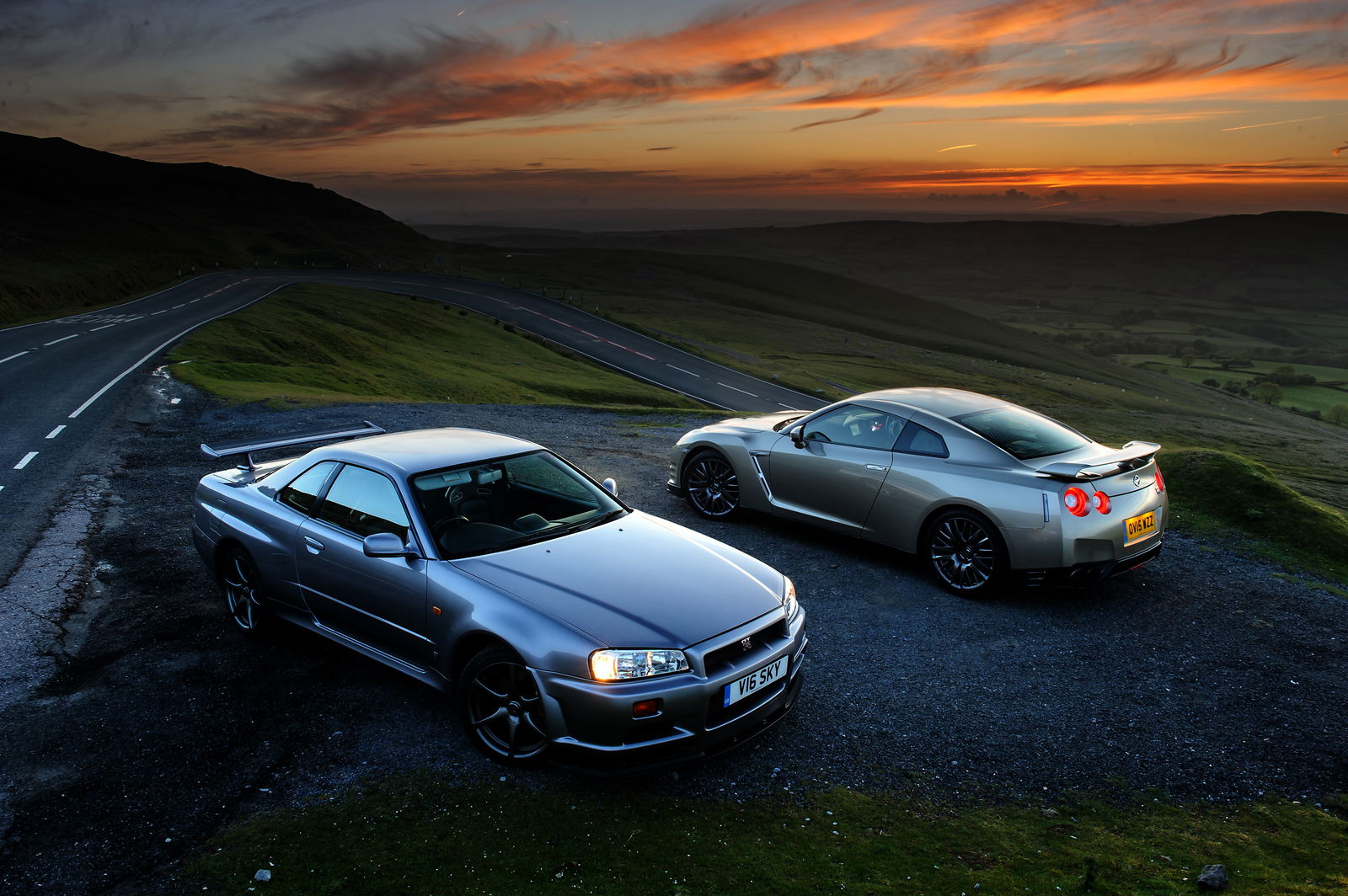
The arrival of the R35 Nissan GT-R in 2007, after a five-year absence, ditched the Skyline name but continued its legacy, and has continued production for a remarkable 16 years. Superb on-road performance, racing heritage galore and pop culture stardom through the likes of Initial D, Gran Turismo and The Fast and the Furious are just a few of the reasons that the Skyline GT-R continues to evoke such fandom around the world.
The origins of the Nissan Skyline
Long before the GT-R came into being, the Skyline nameplate was used on luxury cars made not by Nissan, but by the Prince Motor Company of Tokyo in the late 1950s. Prince had made several successful forays into motorsport with the Skyline during the mid-1960s.
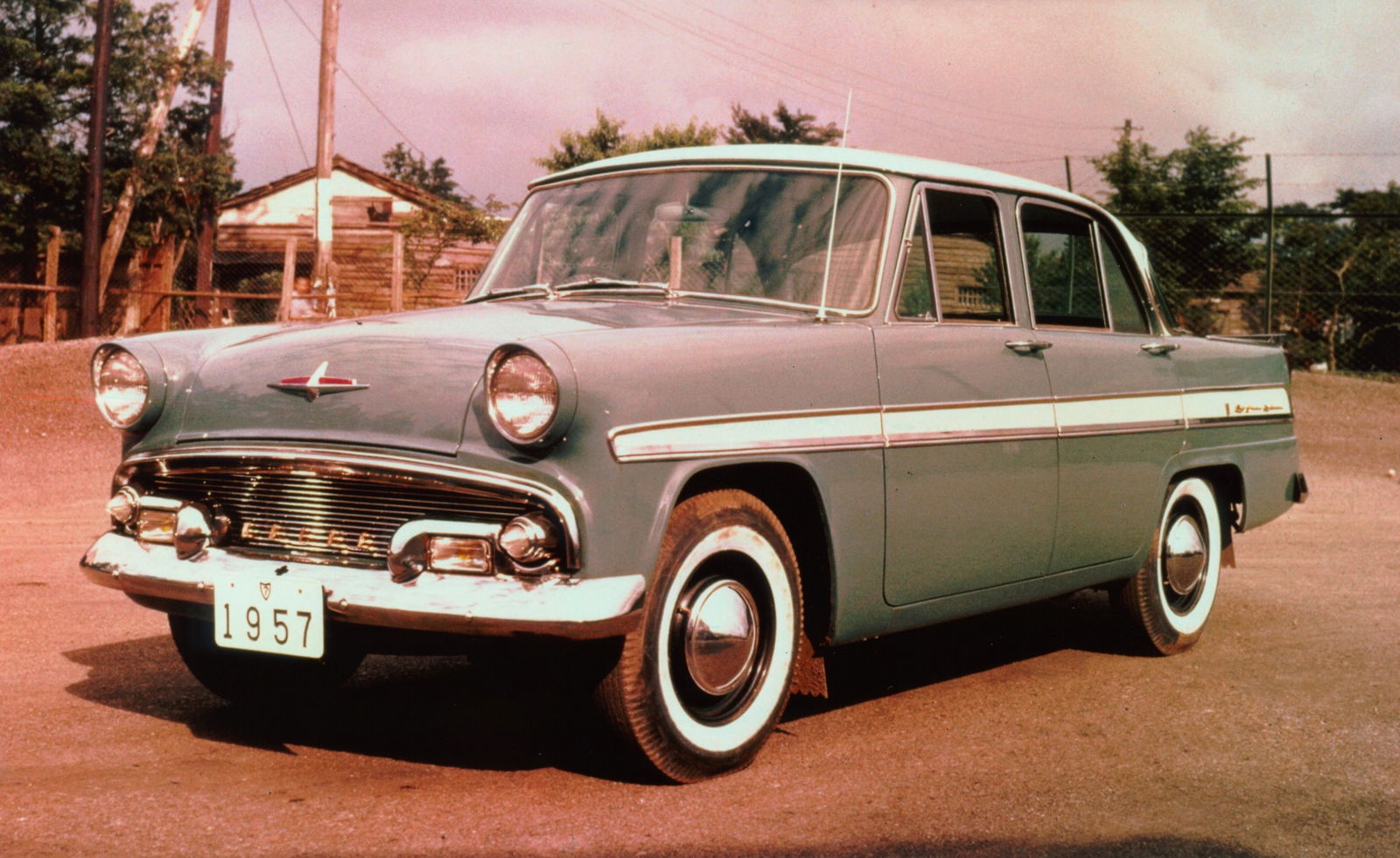
Then, in 1966, Prince and Nissan merged, which kickstarted a new era for the Skyline. In 1968 the third-generation C10 Skyline was introduced in saloon and estate form – and bearing the Nissan badge – and it was this platform that formed the base for the first GT-R.
1969 Nissan Skyline GT-R (PGC10)
In late 1968, a high-performance Skyline saloon codenamed the PGC10 was unveiled at the Tokyo Motor Show. To the public, it was known as the Skyline 2000 GT Racer, but that would soon be shortened to GT-R.
Sold only in Japan, it was powered by a 2.0-litre, straight-six S20 engine, which was a street version of the prototype R380 racing engine. The S20 had four valves per cylinder and a hand-ported and polished head. Three carbs sorted the fuel mix out, and the final product produced 160bhp at 7000rpm.
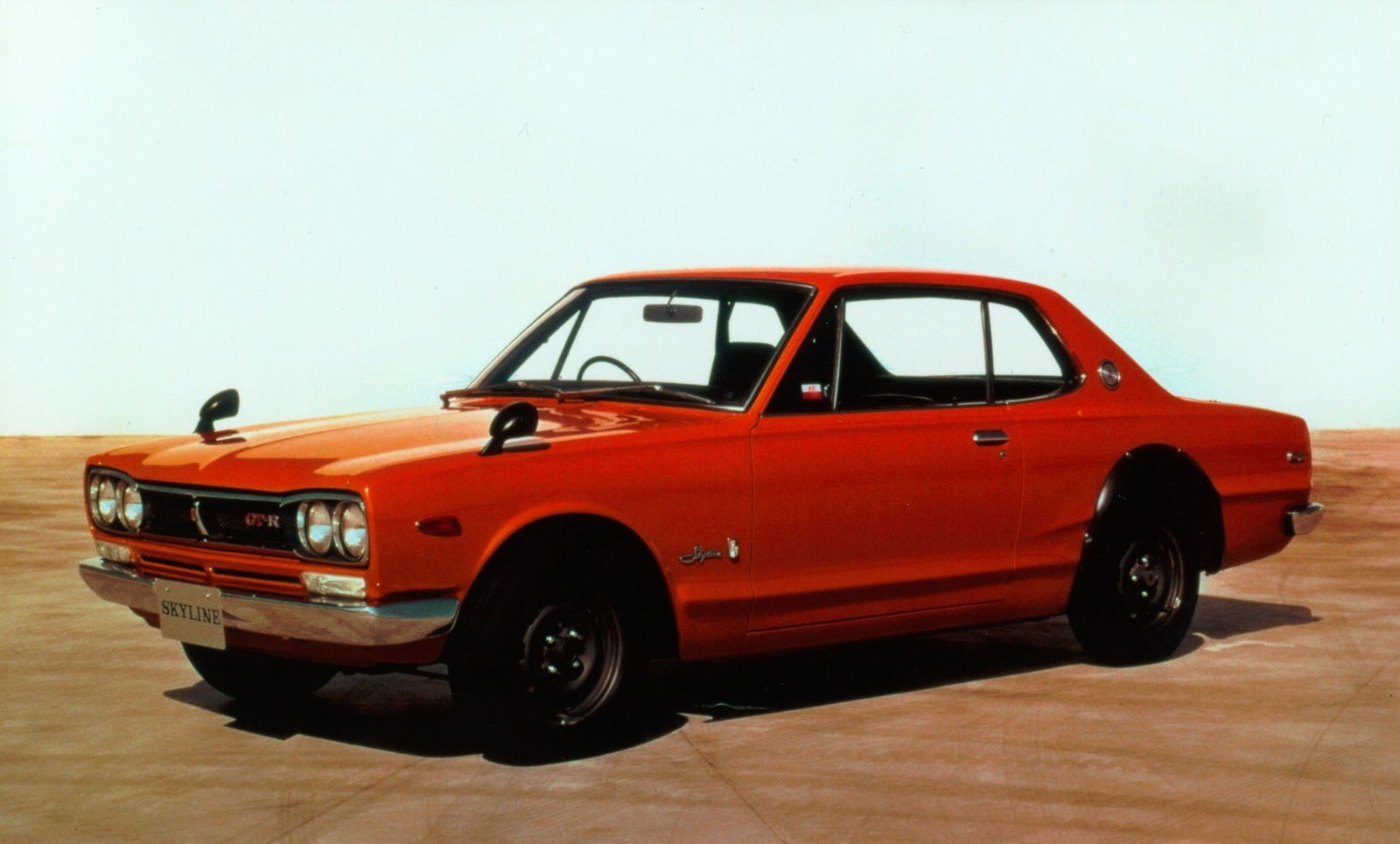
Front-engined with rear-wheel drive, it rode on a steel chassis with a sophisticated suspension setup: MacPherson struts at the front, with shorter springs and stiffer dampers than the standard Skyline, and semi-trailing arms at the back and anti-roll bars at both ends. Stopping power was enhanced with front disc brakes, and a bigger fuel tank was installed – double the size of the standard Skyline 2000 GT. The standard car’s four-speed manual gearbox was upgraded to a five-speed, and a limited-slip diff installed.
The racing version of the GT-R started winning domestic races before full production even began. The saloon GT-R was followed by a coupe model in 1971, which took over racing duties. It also took over the nickname that had been bestowed upon it – Hakosuka, which combines the Japanese word for ‘box’ with an abbreviation of the Japanese pronunciation of ‘Skyline’.
Notable versions
PGC10 – The original four-door saloon Skyline GT-R. 832 were made.
KPGC10 – The 1971 two-door coupe model, known as the Hardtop. It was lighter and more nimble than the saloon version. Nissan built 1,197 of them.
1972 Nissan Skyline GT-R (KPGC110)
Following the success of the PGC10, Nissan introduced its successor at the 1972 Tokyo Motor Show. Based on the fourth-generation C110 Skyline hardtop coupe, it kept the S20 engine but had disc brakes front and rear.
.jpg?width=1600)
The new Skyline GT-R seemed to be set up for similar glory to its predecessor, but Nissan reckoned with the petrol crisis that had been festering since the start of the decade and really took hold in 1973. Fuel economy rather than high performance was the priority of the day; the order books reflected that and company strategy followed. Nissan canned its motor racing programme, which meant it had little use for the Skyline GT-R, and production ended just six months after it started. Just 197 KPGC110s were sold, and the Skyline GT-R was, in effect, dead.
The broader Skyline range continued, with new generations arriving in 1977, 1981 and 1985. While some performance models were produced, and Nissan soon got back into racing in Japan and Australia, there were no GT-Rs produced for some 16 years.
Notable versions
Just one version of the KPGC110 was made, and only 197 models before it was killed off. It was nicknamed the Kenmeri, thanks to advertising that showed a young couple – Ken and Mary – on holiday with their car.
1989 Nissan Skyline GT-R (R32)
All that changed in 1989 with the arrival of the eight-generation R32 Skyline, which had a GT-R planned from the off. With the base Skyline having evolved considerably since the C110, and many iterations of race cars produced (most notably for Australian Touring Car racing), the R32 was a huge leap forward for the Skyline GT-R.
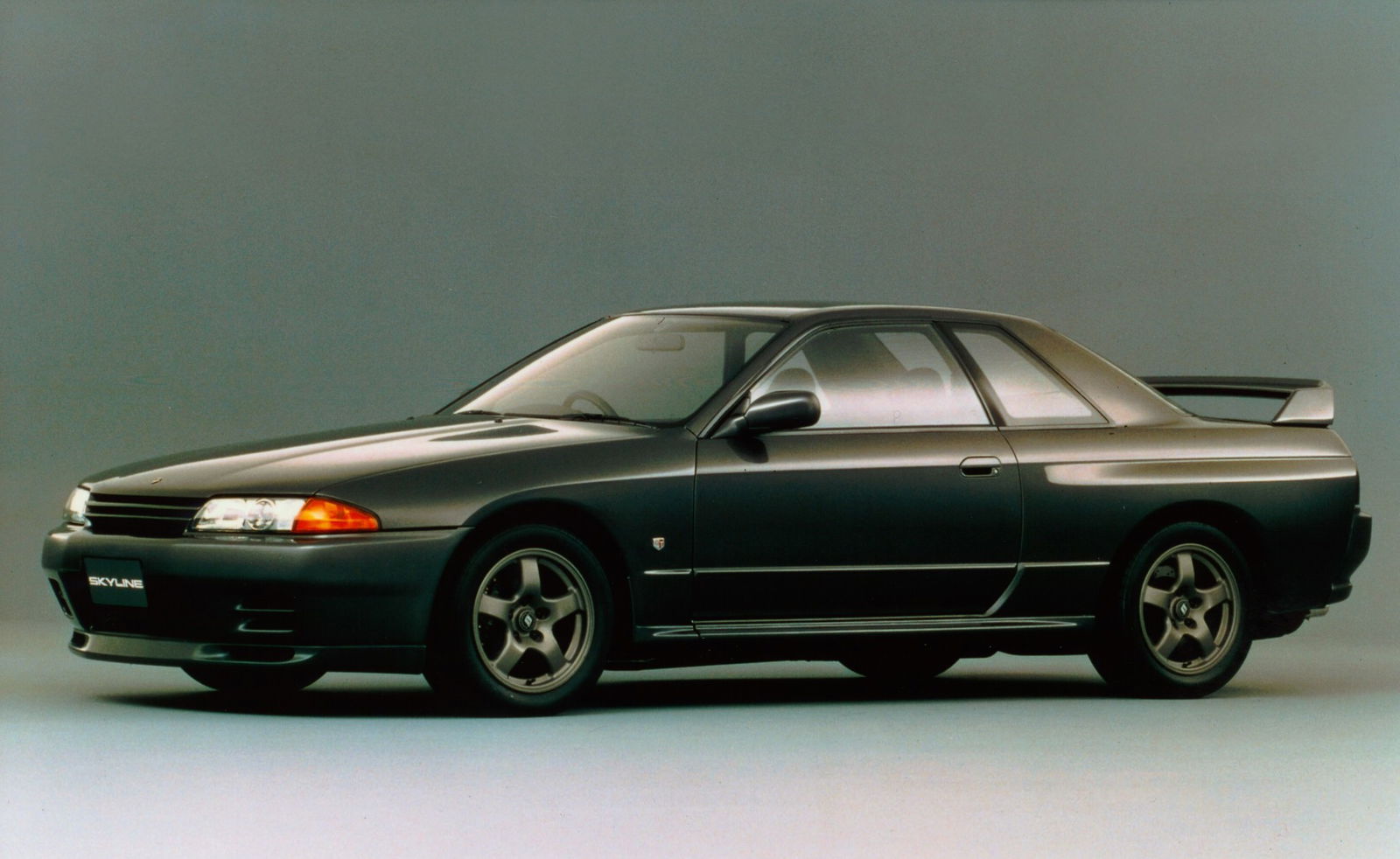
By now, racing Skylines had straight-six, turbocharged engines, which in racing trim would push out some 500bhp. For the public, the R32 Skyline GT-R introduced an all-wheel-drive system – the catchily-titled Advanced Total Traction Engineering System for All-terrain with Electronic Torque Split, better known as ATTESA ET-S. Together with the RB26DETT 2.6-litre twin-turbo engine (officially with 276bhp but often with much more), this system formed a template that can still be found in the latest GT-R, mixing bags of power with torque and traction at whatever end of the car you needed it. Power and grip would become hallmarks of the GT-R name.
Notable versions
Skyline GT-R – The standard car, sold from 1989
Skyline GT-R Nismo – A homologation model built in 1990 to satisfy racing regulations. Only 500 road-going versions were made. They featured a Nismo bodykit, different turbochargers and no ABS. Nissan also offered Nismo components to owners so they could upgrade their standard car to Nismo spec.
Skyline GT-R V-Spec – Built in 1993 to celebrate three straight Japanese touring car championship wins, the ‘Victory Specification’ cars had 17-inch BBS wheels, upgraded Brembo brakes and tweaked suspension, as well as revisions to the ATTESA 4WD system.
Skyline GT-R V-Spec II – Another championship meant another V-Spec car. It was almost identical to the first V-Spec, save for different tyres and a “V-spec II” sticker on the boot.
Skyline GT-R N1 – A very low-volume edition that evolved the Nismo model. They also feature big steel-turbined turbochargers, a Nismo bodykit and a stripped-out spec with no ABS, stereo or AC as standard. They were all the same colour (Crystal White) with super-thin paint to reduce weight. Just 63 were made as versions of the standard GT-R, the V-Spec and the V-Spec II.
1994 Nissan Skyline GT-R (R33)
The evolution of the GT-R we would come to know and love continued in 1994 with the unveiling of the R33. And it was very much an evolution; very similar to the R32 with many shared components. Notably for UK fans of the Skyline, the R33 was the first GT-R to be officially imported to our shores (albeit in very small numbers and only through a single dealer in the North West).
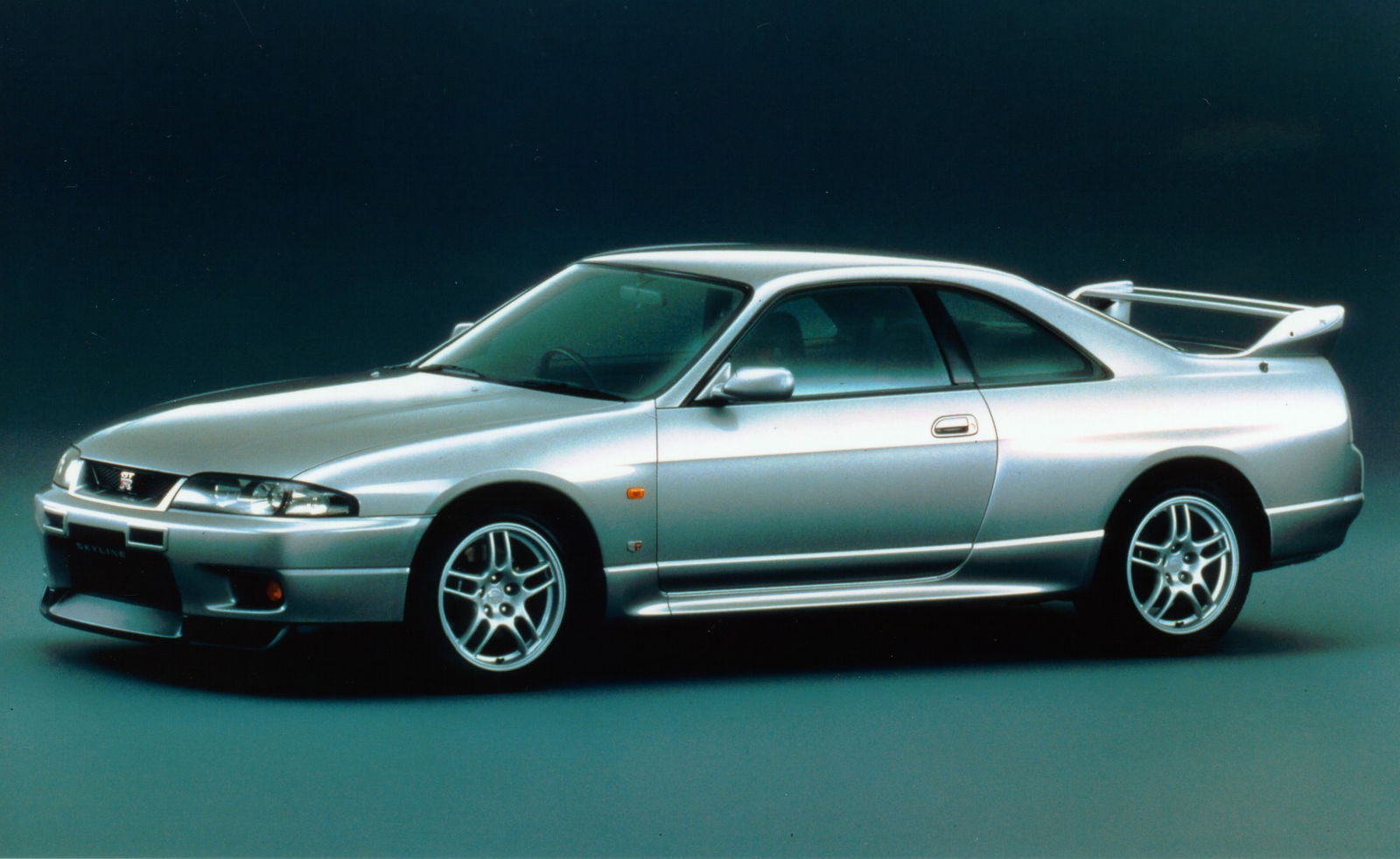
The standard GT-R and the V-Spec went on sale together, the latter of which had uprated, lowered suspension and an overhauled version of the ATTESA system, now with an active limited-slip diff. All versions were, on paper at least, improvements over the R32, with more power and torque, more tech and more grip. That said, the R33 didn’t have the same level of racing attached to it as the R32, which for some has lessened its appeal.
For others though, the R33’s timeline coincided very nicely with the release of a videogame with which the GT-R badge would later become synonymous. Sony’s Gran Turismo had been five years in the making and was unveiled in 1997. For many, it brought the Skyline into their bedroom and gave a huge boost to a name that had previously been largely the preserve of JDM nerds. The R33 has been a mainstay of every GT game since.
Notable versions
Skyline GT-R LM Limited – In 1996, Nissan celebrated its return to the 24 Hours of Le Mans by building 188 special edition R33s. The LM Limited cars were spread over standard and V-Spec models, all with Champion Blue paint and commemorative stickers, as well as extra bodywork on the front and a carbon fibre spoiler.
Skyline GT-R Great Britain V-Spec – Sold only in the UK, 97 V-Spec models were made and modified by the UK dealer, Middlehurst of St Helens. These cars had extra cooling for the gearbox, rear diff and transfer box, UK-spec bumpers to house the legally required indicators, sidelights and so on, and UK-spec headlights.
Skyline GT-R V-Spec N1 – Once again built to celebrate sporting success, three runs of V-Spec N1 cars were made in 1995, 1996 and 1997. They had carbon fibre spoilers, revised turbos and tweaked engine internals.
Skyline GT-R Autech Version 40th Anniversary – Built to celebrate 40 years of the Skyline in 1998, the Autech model was a saloon version of the GT-R with four doors and bucket seats in the back. Visually, it was relatively staid with no rear spoiler and a subtle front bumper. It ran the standard GT-R running gear and 416 were built.
1999 Nissan Skyline GT-R (R34)
While the R33 had made an impact on the public consciousness, it wasn’t until the R34 GT-R arrived that its legendary status really began. Once again, it was essentially an evolution of the R33, but it had more angular looks, an overhauled interior and a screen that showed live engine data and telemetry – seriously high-tech for 1999.
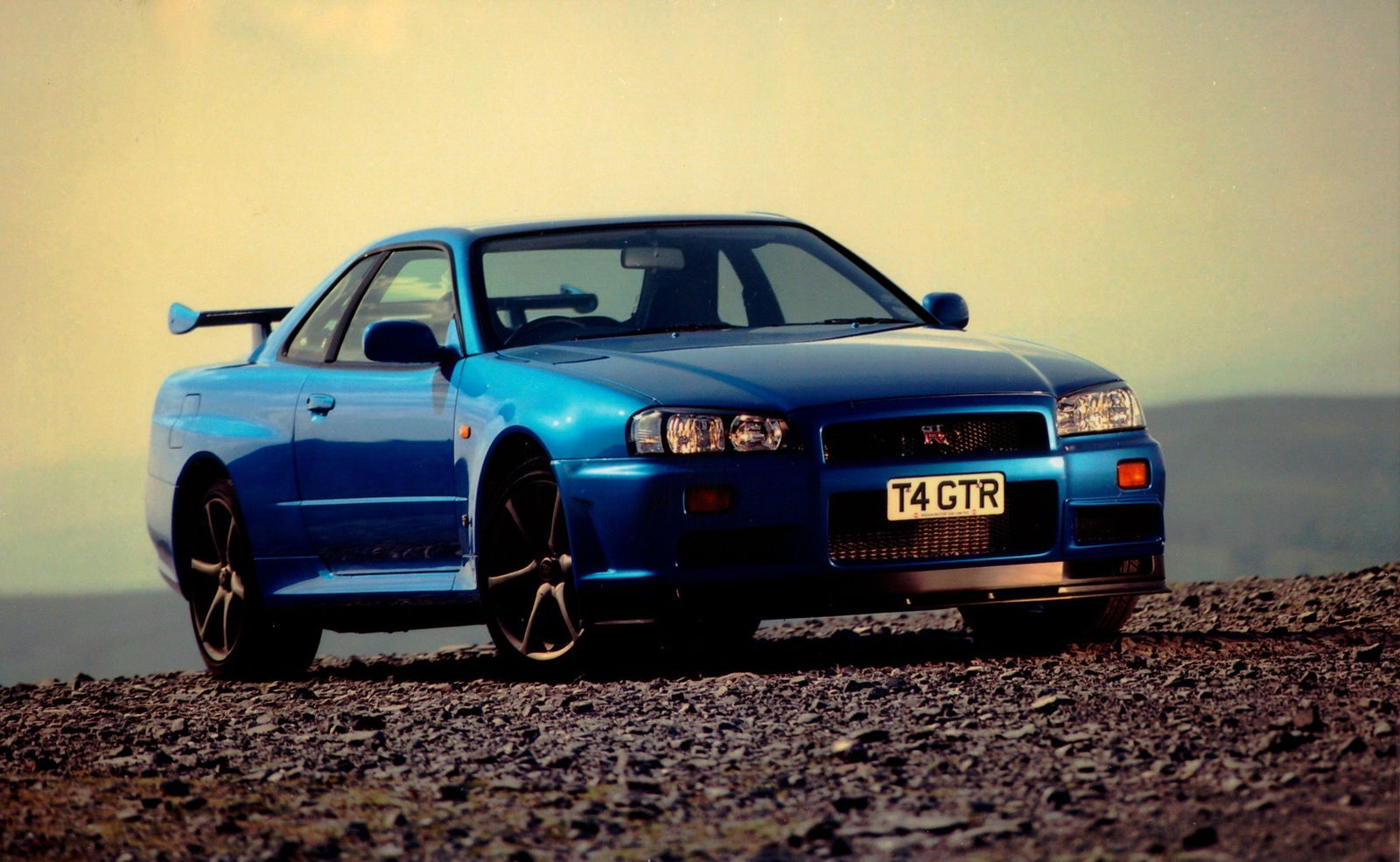
For the first time, Nissan GB decided to import them for Brits to buy nationwide. British-spec R34s had some fairly substantial upgrades, including extra cooling and a revised ECU, as well as some interior upgrades such as fancy Connolly leather upholstery (which had also been offered on UK-imported R33s).
As well as the obvious performance impact of the R34 – taking the battle to the likes of Porsche, Jaguar and Aston Martin in the all-important magazine group tests and Nurburgring lap times – the R34 also made a huge popular culture impression. The Gran Turismo link continued, putting the car front and centre for millions of young (and older) gamers.
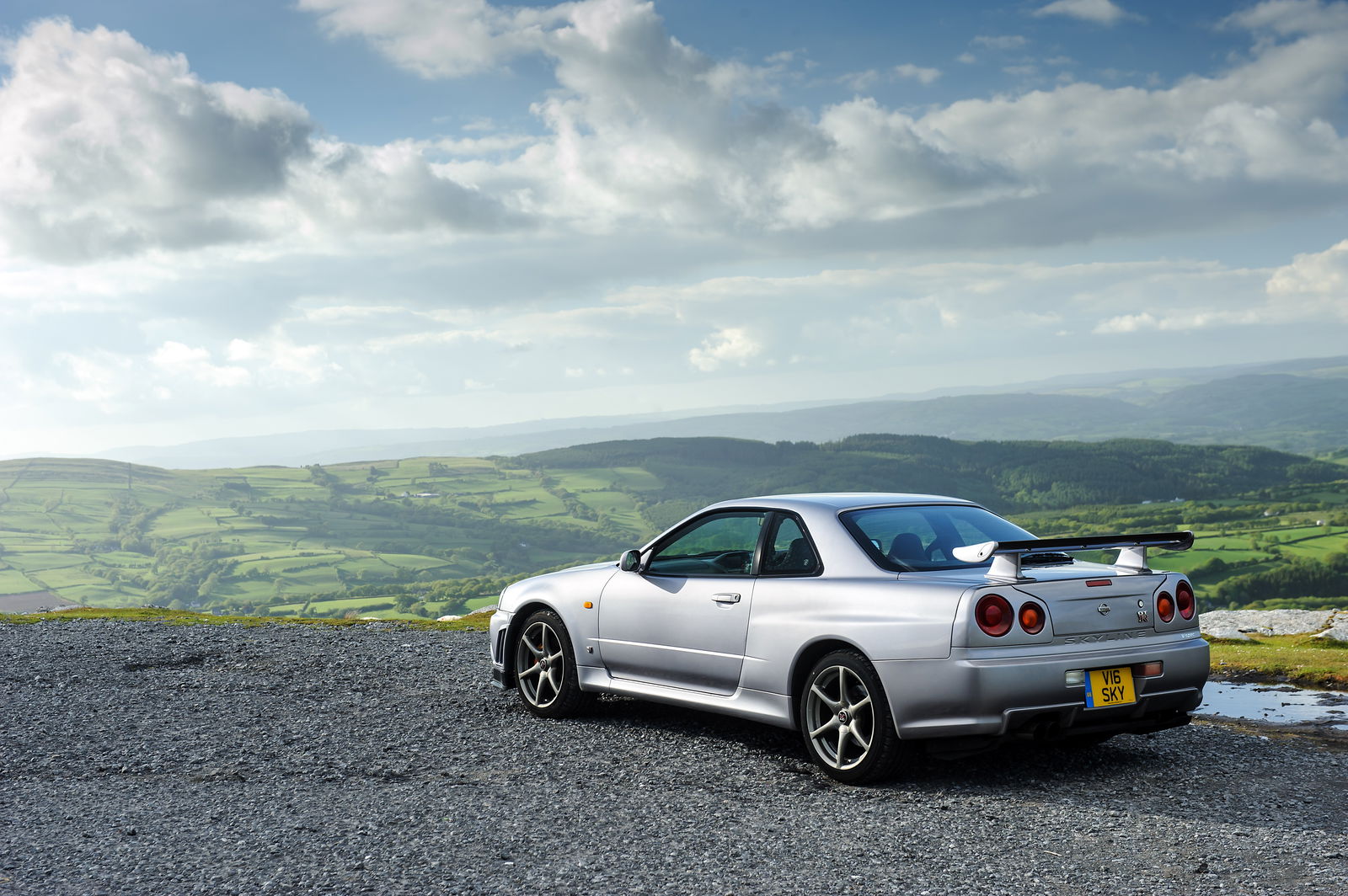
And then in 2003 – a year after production of the R34 stopped – a little movie called 2 Fast 2 Furious was released. Paul Walker and Vin Diesel were ostensibly the stars of the film, but for many, it was Walker’s R34 GT-R that stole the show.
Notable versions
Skyline GT-R M-Spec – Only 366 versions of the M-Spec were made, based on the V-Spec II model but without the carbon bonnet and with a special Silica Brass paint scheme. It also had gold stitching on the interior and modified Ripple Control suspension designed to be more comfortable on the road.
Skyline GT-R Nür – Named after the famed Nürburgring circuit where the GT-R was developed, these 2002 models were made from V-Spec II and M-Spec models, and added upgraded N1 engines with reinforced internals, with exclusive Millennium Jade paint and gold engine covers.
Skyline GT-R Midnight Purple – Built on standard GT-R and V-Spec base models, the Midnight Purple editions were… purple. That was it.
2007 Nissan GT-R (R35)
Although the GT-R name disappeared from production in 2002, its popularity didn’t wane. If anything, it grew. Nissan had already decided to bring it back – not as a derivation of the Skyline, but as a standalone model – and a concept car had been revealed way back in 2001. Another one dropped in 2005. But it wasn’t until 2007 that the Nissan GT-R was revealed, after years of engineering, testing and development in Japan, at the Nurburgring and on roads and racetracks around the world.
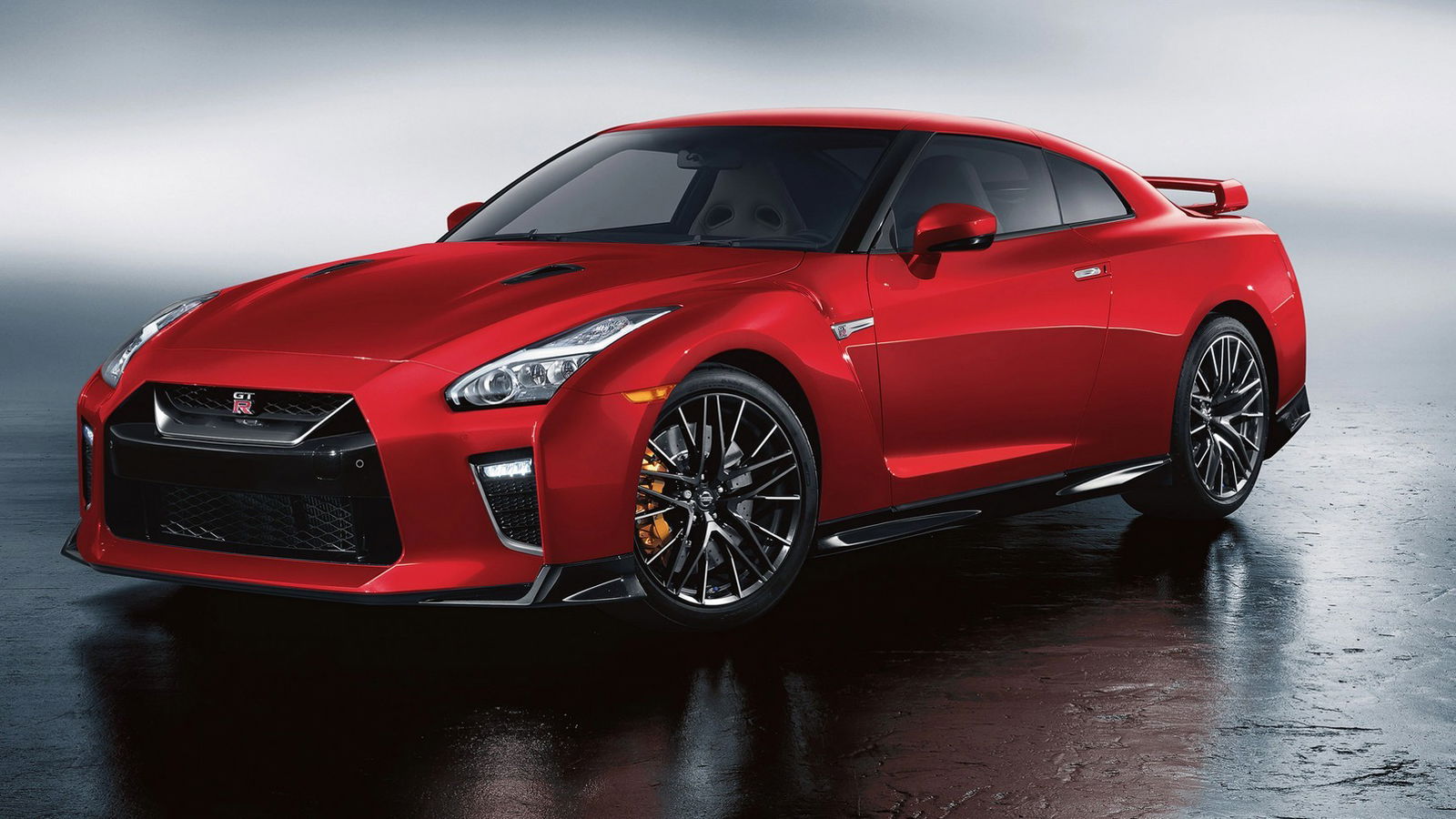
The Skyline name was gone but there was no doubting the car’s heritage. Although it was an all-new model, the rear taillights paid direct homage to its ancestors, and the codename R35 was a flat-out statement of continuation. It was launched with a new lap record around the ‘Ring (in the wet), beating the Porsche 997 911 Turbo
The stats were hugely impressive. The all-new 3.8-litre, twin-turbo V6 delivered 473bhp – a lot of horsepower for 2007 – and it was sent to the road through a new independent transaxle four-wheel-drive system. A trick Bilstein DampTronic suspension system kept everything in control and meant the GT-R hauled butt through and out of corners. Huge Brembo brakes provided the stopping power.
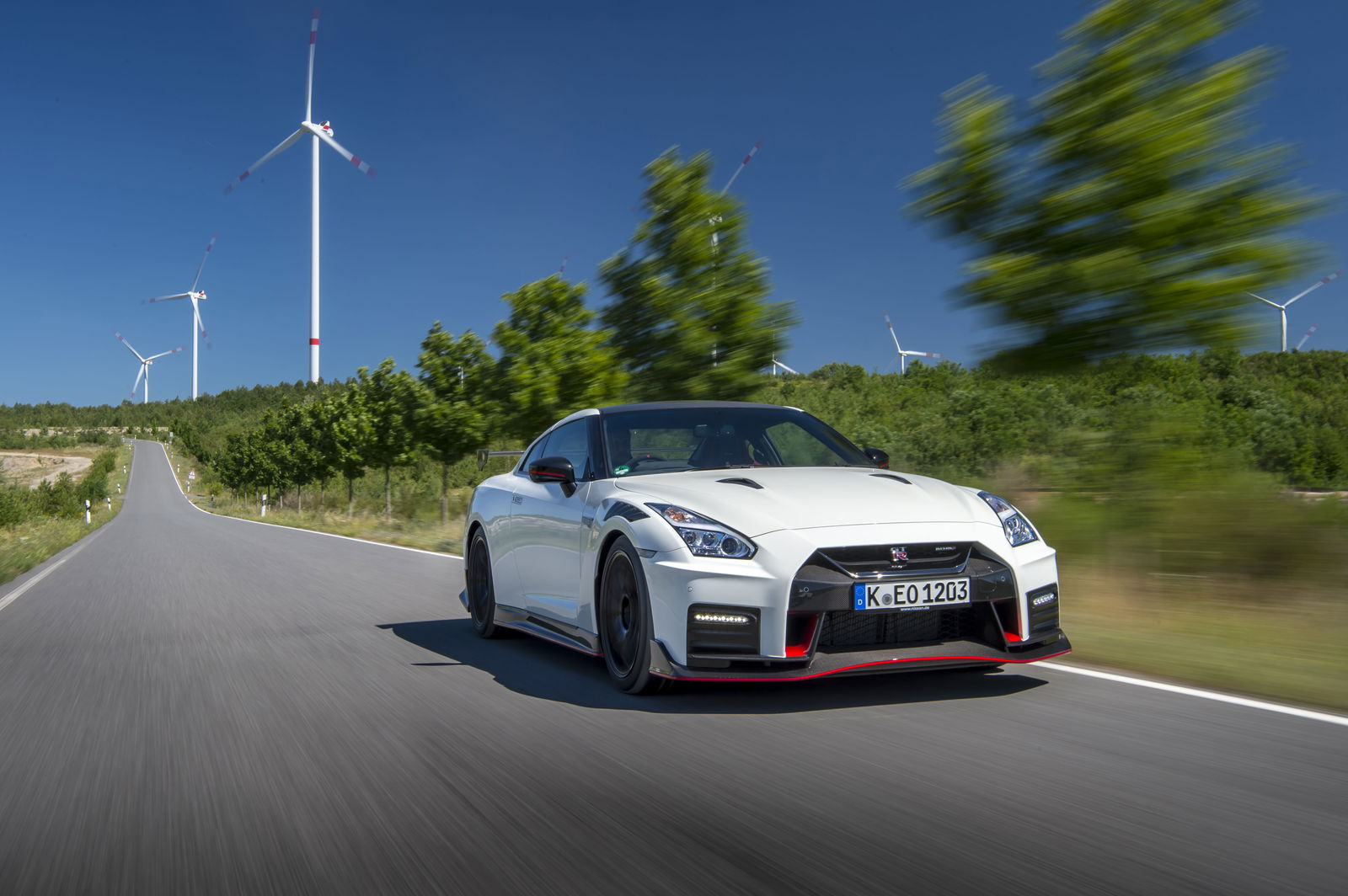
The GT-R has continued to evolve ever since. As we write this, it’s been in production for almost 16 years, which in automotive terms is basically forever. Tweaks, upgrades and myriad special editions have come thick and fast, although emissions standards mean it’s no longer officially sold in Europe. The USA and Japan will get a facelifted model in 2024.
Notable versions
GT-R50 – Made to celebrate 50 years of the GT-R, this car is a tie-up with Italdesign. Just 50 were built, with a substantial visual overhaul and a power boost up to 710bhp, courtesy of GT3-spec turbos and various other racing internals for the engine. The brakes and suspension have also been overhauled. The price when new? Around £885,000.
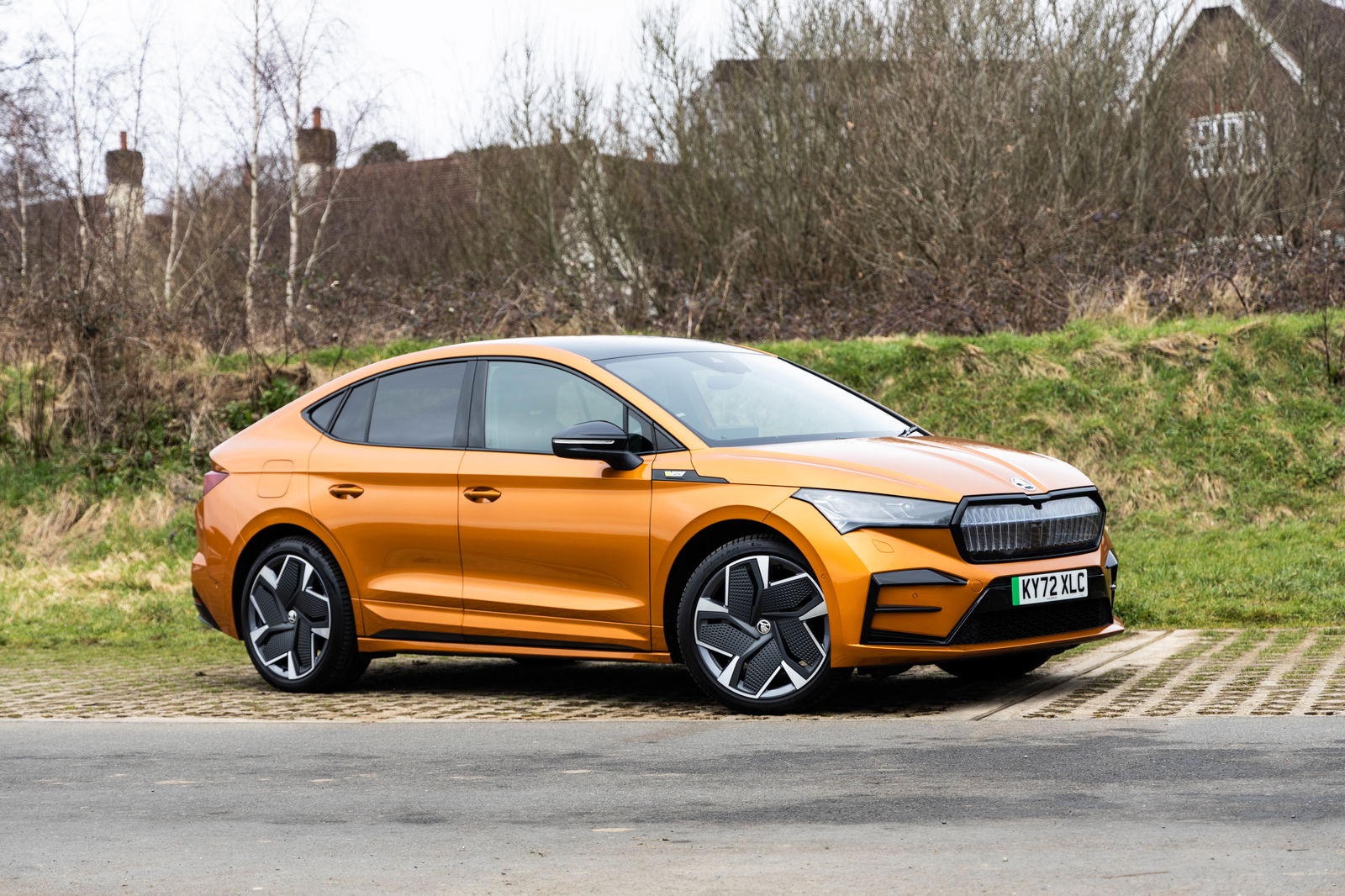
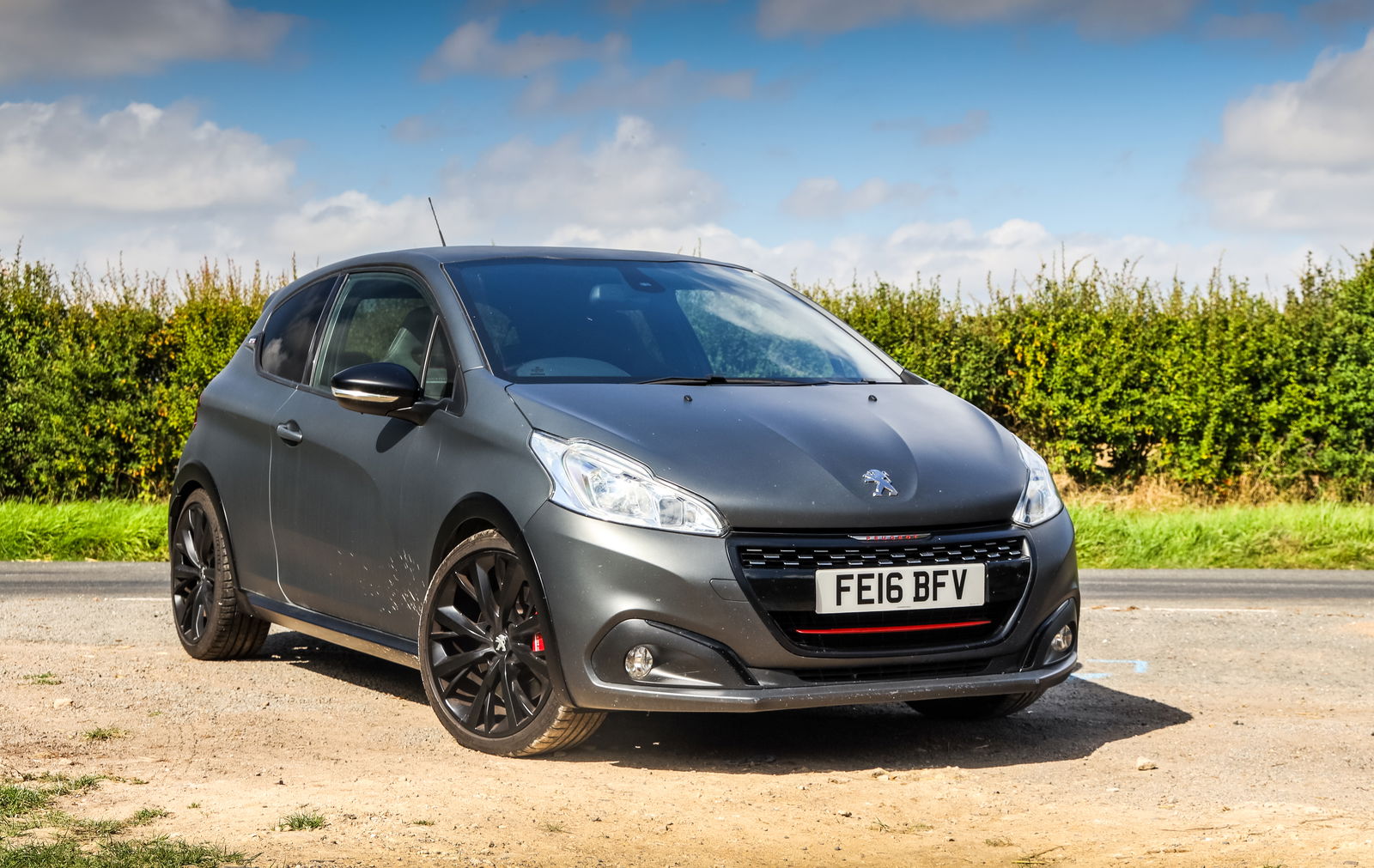

Comments